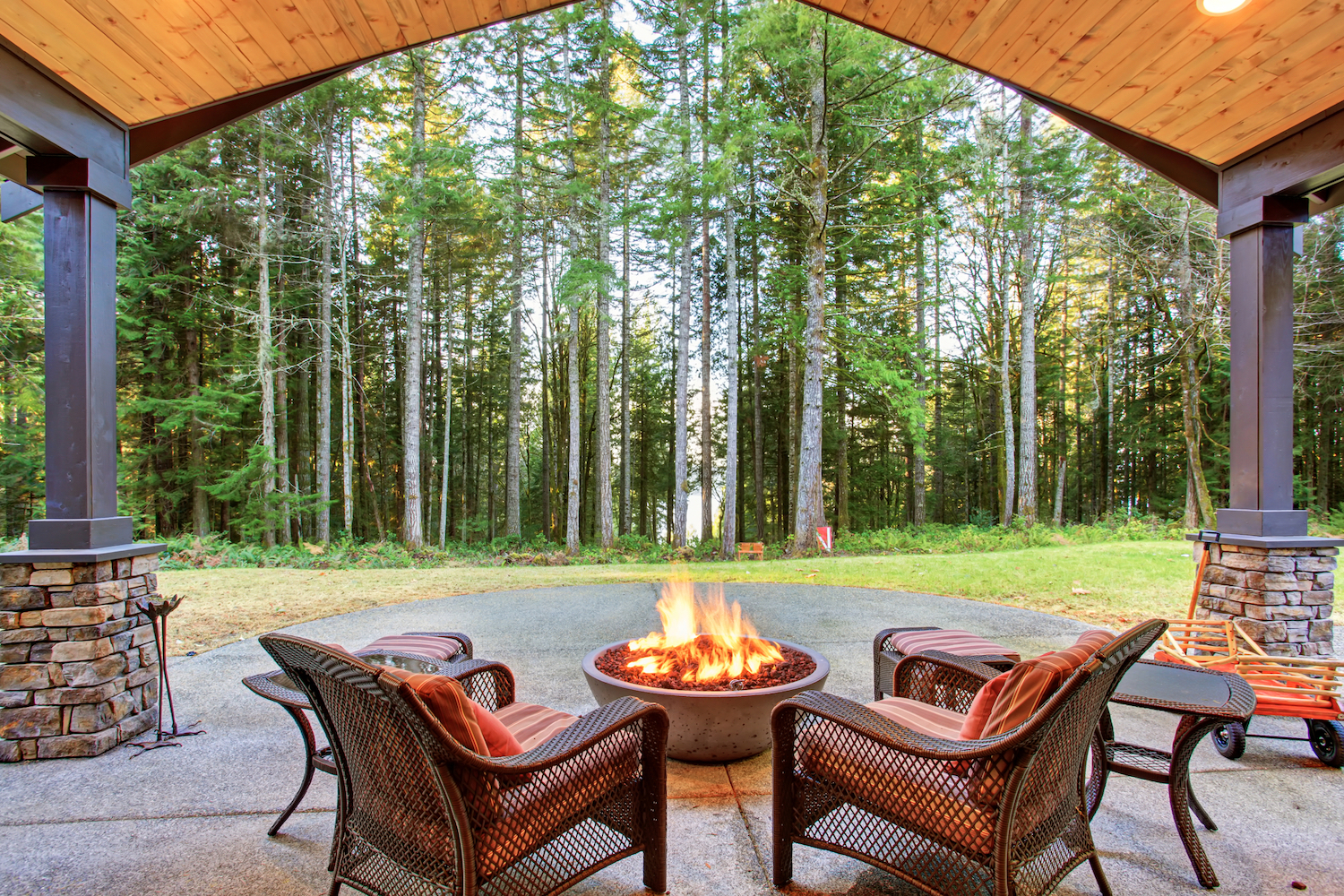Your Complete Covered Patio Guide
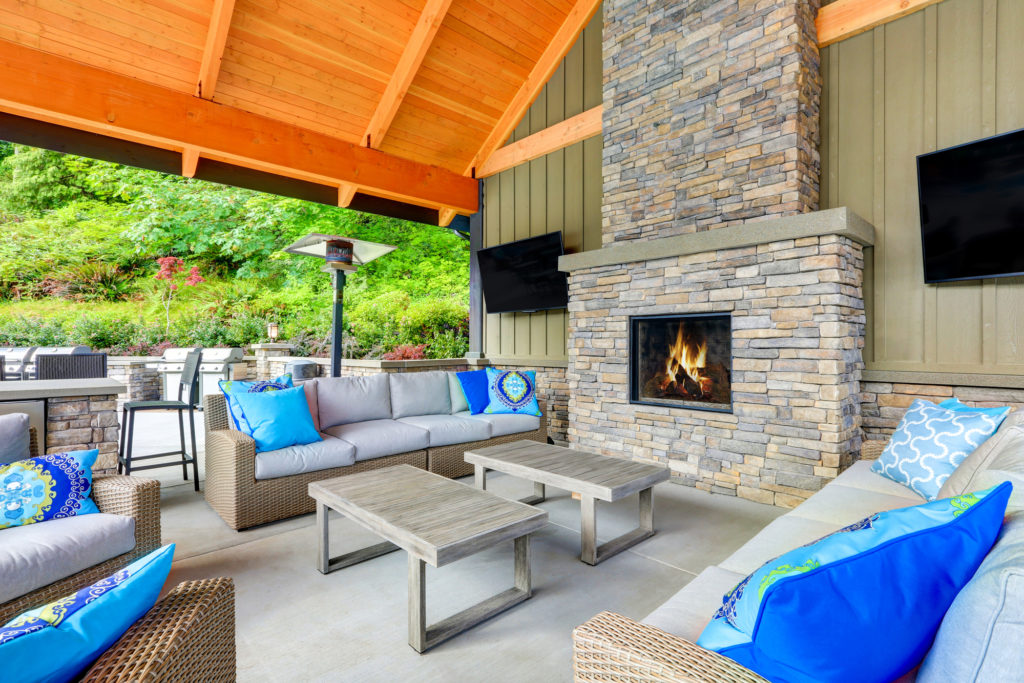
Adding a cover over a patio is one of those magical things a homeowner can do relatively cheaply that makes a million bucks of difference. It can transform part of the great outdoors into a space that’s almost a bonafide room. There’s just something special about serving a meal or hosting a party under the shelter of a beautiful canopy.
But before construction starts, you’ll want to do some planning and make sure that the right cover gets constructed. Sure, almost any cover might improve things – but just a little thought beforehand can make something merely nice into something amazing that friends will be talking about until the next gathering.
In this article, we’ll explore a bunch of covered patio ideas and examples to get you inspired. We’ll help you transform your outdoor space into something beautiful, functional, inviting, and comfortable! Once your new covered patio is constructed and ready to decorate, our removable, weatherproof cushion covers are the perfect way to top it all off.
Covered Patio Ideas
When designing a covered patio, the first choice to make is usually between an open cover or a solid one. Both types of covers can provide some shade and contribute to the overall ambiance. An open patio cover will help keep things cool and let some sunshine in, though it won’t protect against rain. A solid cover largely takes care of the rain problem but – perhaps counterintuitively – traps heat in the summertime and could make the whole affair swelter. With this in mind, your location and climate are important to consider when choosing which type of patio cover is best for you.
Backyard Covered Patio Ideas
In the sections that follow, we’ll explore some patio ideas for both open and solid covered patios:
Open Cover with Vines
A classic covered patio idea is the open cover with vines crawling up, over, and all through it. Visually, it’s one of the most appealing options imaginable. Practically, it’s perfect for dry, hot days.
Of course, no open patio cover will protect against rain. This is the tradeoff to consider when you choose between an open and a solid cover. But if you anticipate more heat than moisture, an open cover with vines hugging it may be the perfect covered patio idea for you.
There are ample crawling vines to choose from as well. Honeysuckle may be one of the easiest, fastest-growing options. Its red-orange color provides a striking contrast against its green leaves, and the scent is unforgettable. It’s especially fragrant around sunset which is perfect for late-afternoon and evening gatherings.
Grapes are another great idea. The shade and cool of a creeping vine over the patio cover is the same as with honeysuckle and the edible fruit practically dripping off the vine imparts a feeling of abundance like few other things can.
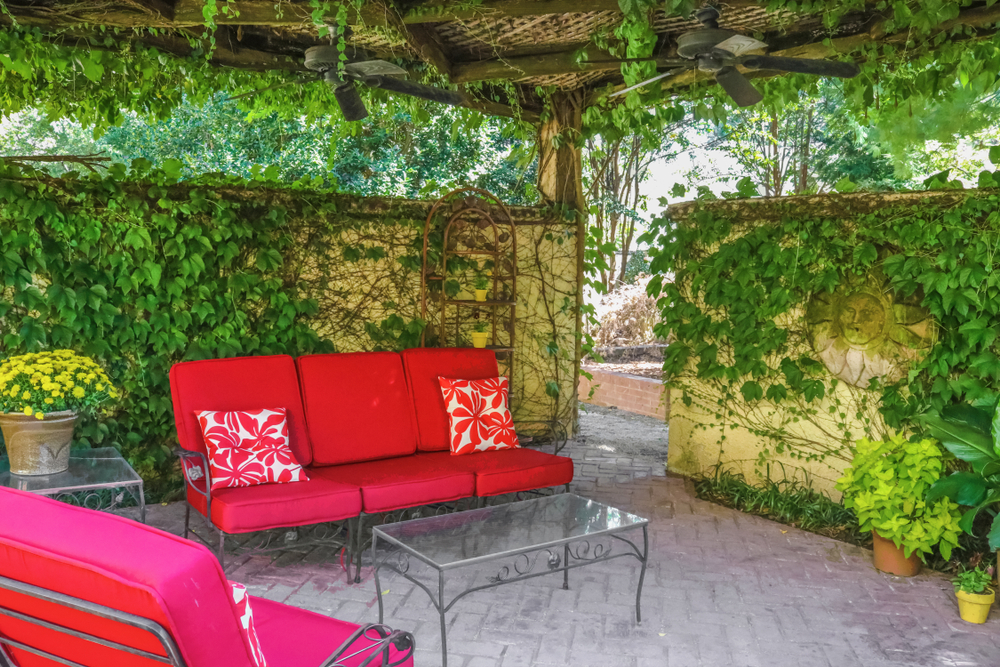
Solid Cover with Ceiling Fans
As we said above, a solid patio cover will trap heat on those hot days without rain. If you’re not prepared for this, the high temperatures could end up being as uncomfortable as getting rained on.
Therefore, if you opt for a solid patio cover, you’ll most likely want to install at least one ceiling fan. More than one if you’re looking at a lot of square footage. But don’t worry; ceiling fans don’t all look the same anymore and just like crawling vines, there is a plethora of beautiful choices to shop through. If you pick the right fan, it can make your patio area absolutely pop.
Another benefit to opting for a solid cover with ceiling fan(s) is the light that often comes built into the fan. This prevents you from having to worry as much about how to light an evening party!
Having a ceiling fan with various speeds also affords more control over the temperature of the area than other options. Whereas an open cover causes the patio to stay around the same temperature as the rest of the yard, a solid cover with an adjustable fan might just enable you to make the patio area even cooler than the rest of the yard.
Covered Patio Ideas on a Budget
A less permanent but more organic and visually fascinating covered patio idea is a sail shade, also referred to as a sun sail. Just imagine a literal ship’s sail stretched between trees or support posts, say seven to ten feet above the ground. You can arrange them at angles to guide rainwater to the areas you’d like it to end up in; many sail shades are waterproof.
This type of patio cover is much less expensive than more permanent structures. With just a quick search online, you can find lower-end sail shared for $40-50 and higher-end options for a few hundred dollars.
And because an arrangement of sail shades lets air pass through and around it, this covered patio idea may even keep your party cooler than a solid patio cover. It will at least save the cost of running fans. Imagine how fun it could be to set up a pattern of brightly colored sail shades and some tiki torches–you could have your own luau right in your backyard
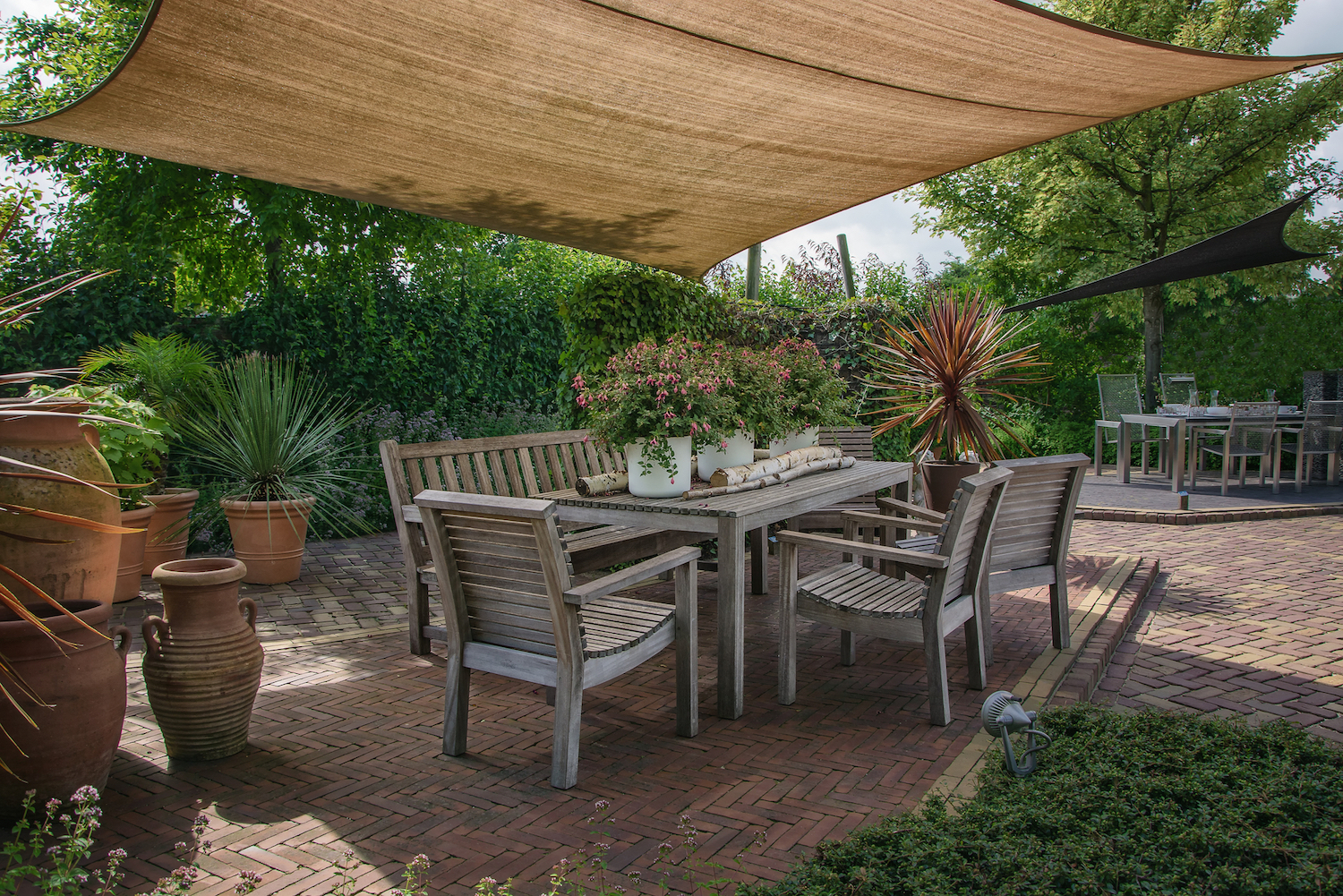
Small Covered Patio Ideas
With small covered patios, you need to prioritize so that you can make the most of limited space. Start by focusing on function and then you can think about the design and decor.
First, carefully consider how you want to use the space. Would you rather have a covered dining area, some comfortable seating, or maybe a space for solo relaxation and meditation? How many people would you like the space to accommodate comfortably? Once you have the necessities mapped out, you can get creative with whatever space you have left.
Outdoor Covered Patio with Fireplace
Wood-burning fire pits (and some gas fire pits) should not be used under a covered patio for safety reasons, but you can go big and add a full-on fireplace with a chimney for proper ventilation.
Adding a fireplace to your covered patio will make the space that much more inviting and comfortable for year-round use. Especially if you live in a colder climate, a roaring fire will encourage you to spend much more time on your covered patio.
A fireplace also acts as a visual centerpiece and contributes to the overall aesthetic, making your covered patio feel more grand and luxurious.
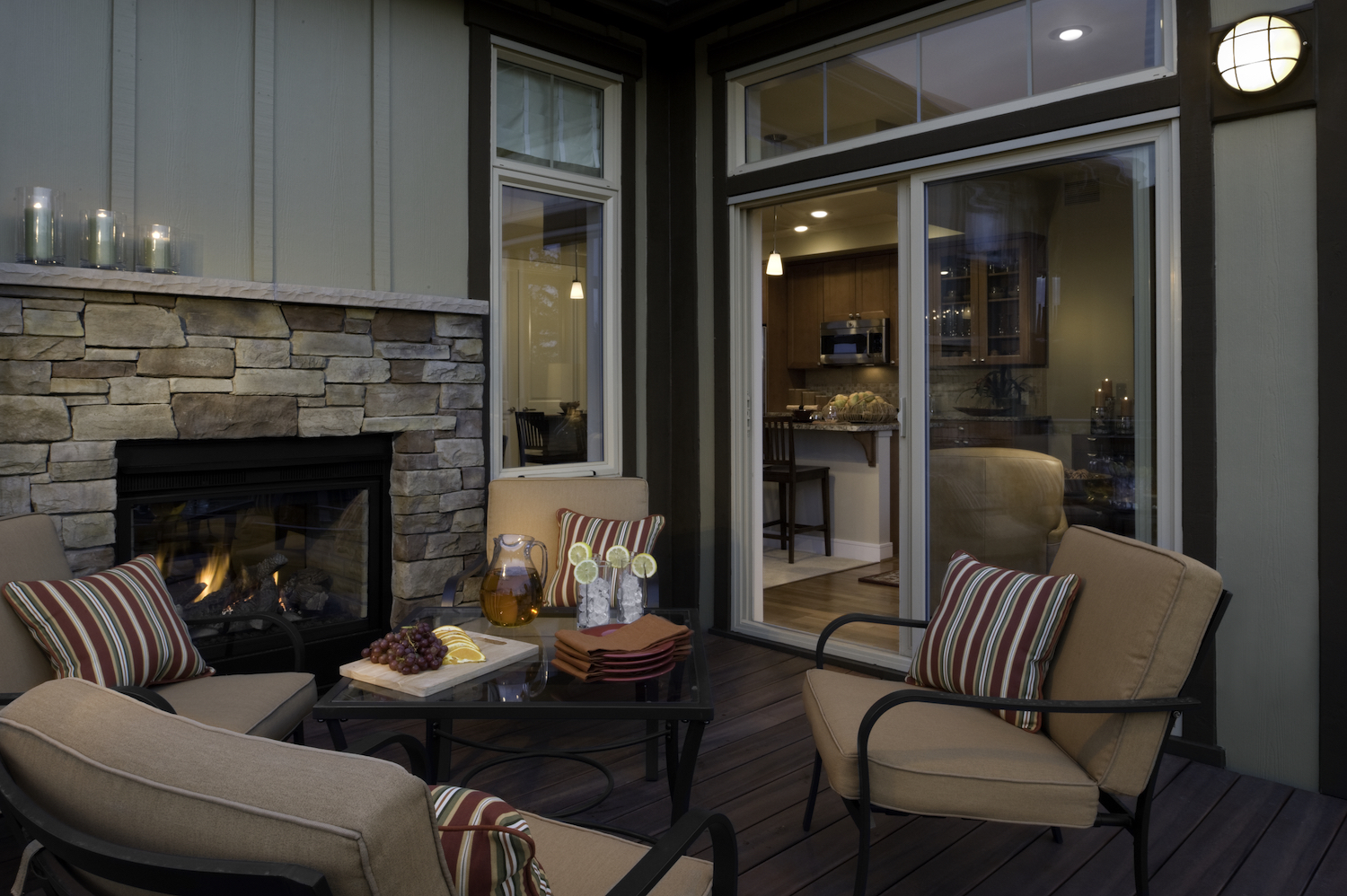
Covered Patio Lighting Ideas
Patio lighting adds to the overall aesthetic but is also important for safety reasons. Fortunately, lighting up your patio is much easier when you have a cover to work with. The cover’s structure provides opportunities to hang a wide range of lights from the beams, whether they be twinkly string lights, an eye-catching chandelier, or anything in between.
Battery-powered LED candles or lanterns are another great (and easy!) lighting option for your covered patio. They can also help create a more romantic and cozy atmosphere.
Covered Patio Cost
Now, let’s get practical and talk about how to plan, execute, and budget for your covered patio project. Keep reading to learn more!
How to Build a Covered Patio
One important thing to note is that you may need a permit and/or homeowners association pre-approval in order to build a covered patio, so be sure to look into this.
If you want to build a patio cover on your own, there are at least two routes you can take. If you don’t have a lot of construction experience or want something more simple, you can go with a prefabricated patio cover or patio cover “kit”. This way, you’ll just have to follow instructions and assemble the pieces, kind of like putting together Ikea furniture, but on a larger scale. Alternatively, if you’re ready for a larger project, you can go the full-DIY route and build a patio cover from scratch.
Key Considerations for Covered Patio Plans and Designs
There are many different ways to build a patio cover. Below are some of the key factors to consider when working on your covered patio plans and designs:
Patio Cover Slope: Depending on the roofing materials you use for the patio cover, a pitched or sloped roof may be needed.
Patio Cover Load: This refers to both dead load and live load. It’s important to comply with your local and national building codes related to roof loads.
Rafter Size, Length, and Spacing: You’ll need to calculate rafter size, length, and spacing after the patio cover load and slope in order to ensure sufficient support.
Supporting Beams or Posts: Use the total weight of the patio cover to determine how many supporting beams or posts are needed.
Footings: Again, check your local and international building codes for guidance on your patio cover footings. Some areas require deeper footings than others.
How to Build a Covered Patio Attached to a House
If you’re building a patio cover attached to your house, there are several different ways to go about it. One of the most straightforward ways to do so is to fix the backchannel to the fascia boards directly underneath the gutter. If you want the patio cover to be higher up, you’ll have to remove the house gutter and place the backchannel a bit higher. Or you can lift the roof of the patio with some riser brackets and a custom barge cap.
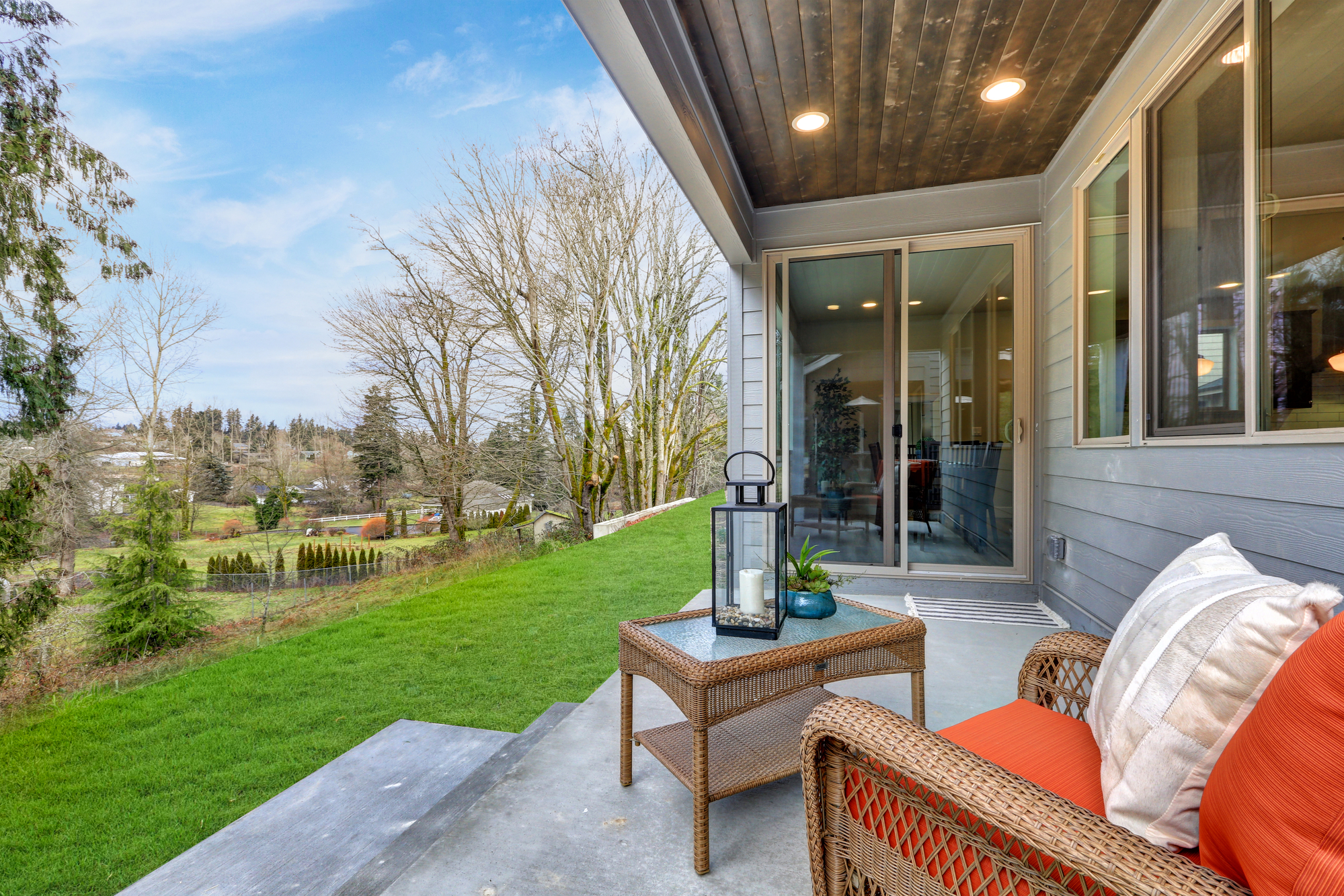
Detached Covered Patio Construction Tips
Freestanding covered patios are generally more straightforward to build than attached patio covers. They are also considered stronger and safer because their cover is supported by four posts rather than other, existing structures.
Here’s a quick overview of the basic steps you’ll need to take:
- Select and map out the area.
- Dig out the holes for the four posts.
- Add gravel to the holes to prevent deterioration of the posts.
- Place the posts.
- Add some cement around the posts to secure them in place.
- Cut and prepare the beams.
- Assemble the beams and posts.
- Structure the roof.
- Cover the patio with the material of your choice, whether that be latticework, fiberglass, metal, wood, shades, or anything else.
How Much is a Covered Patio?
The typical price range for building a covered patio is $8,426 – $25,023. And the average cost is $16,551, or $70 per square foot, according to Home Advisor. Full enclosures typically cost more than partial enclosures. Other factors that affect the cost are the materials used, whether the cover is attached or detached, whether you have walls, windows, or screens, and whether you add a fireplace or other finishing touches, among others.
Covered Patio FAQs with Answers
In this section, we’ll provide answers to some common covered patio questions.
How to Hang String Lights On Covered Patio
String lights add a touch of magic to any patio setting. Fortunately, they’re also easy to hang on the inside of a covered patio. Start by planning out anchor points for your string lights, then install screw eyes. Next, you can use mini metal carabiners to attach the lights to the screw eyes. Lastly, install light bulbs and attach the lights to power and…. Voila! Your romantic covered patio will be ready to enjoy.
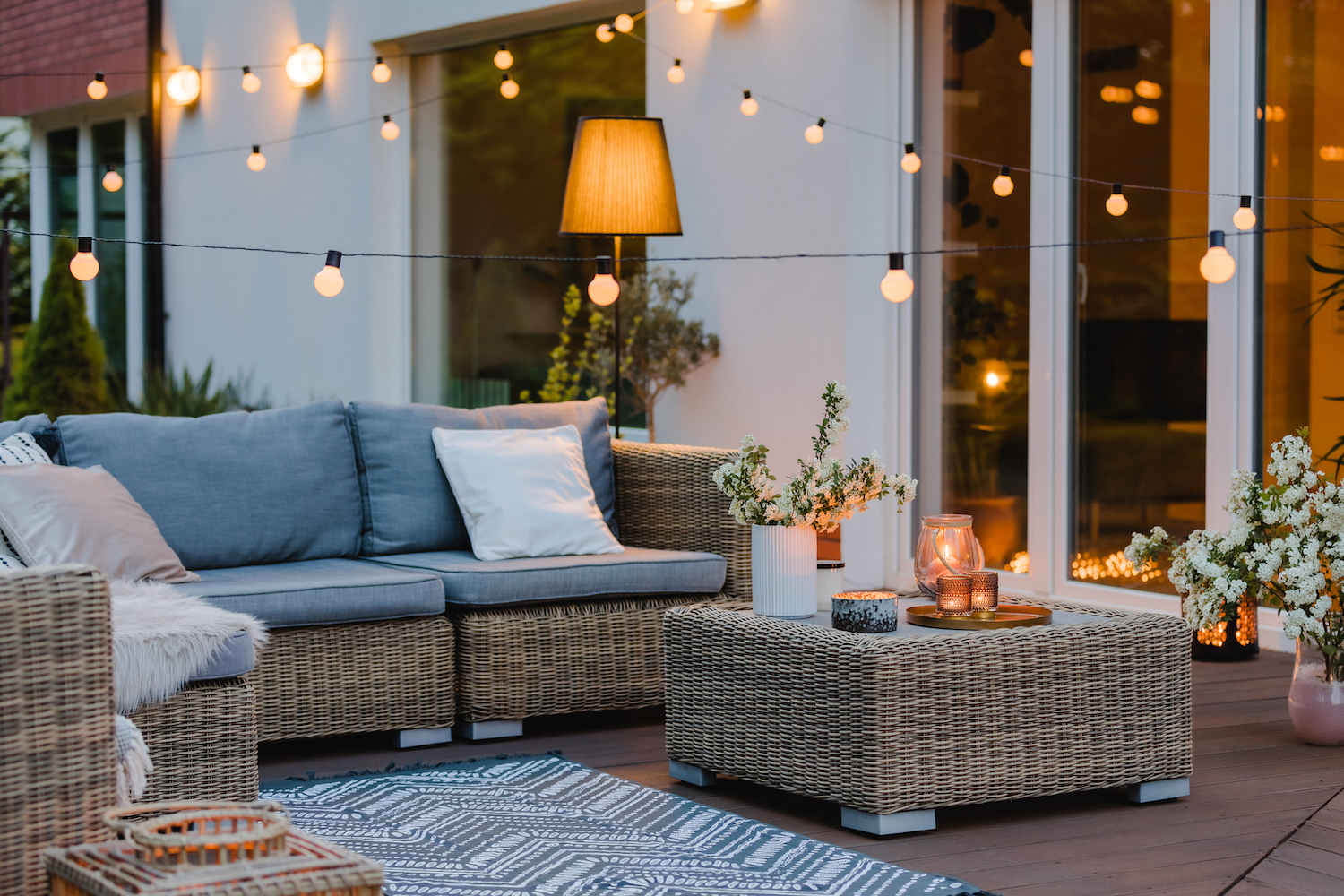
How to Enclose a Covered Patio
Covered patios can be fully or partially enclosed with walls, windows, screens, curtains, or a combination of these. If you can’t decide whether you want an enclosed or open patio, you can achieve the best of both worlds with some semi-sheer roll-down shades. How to go about enclosing a covered patio really depends on the materials and style you choose, so you’ll have to land on the design first and then do some more research.
How to Put a Gas Grill Under Covered Patio
You can place most gas grills under a covered patio, but they should not be used in an enclosed area without adding a motorized vent and hood. As a general rule, make sure you have at least a 9-foot ceiling or taller. Also, it’s best to place the grill away from the house and on an outside wall with plenty of ventilation or cross-breeze.
How to Add a Covered Patio Fire Pit
Whether or not it’s safe to place a fire pit under a covered patio depends on several factors, such as how high your patio cover ceiling is, the type of fire pit you purchase, what kind of patio flooring you have, how much ventilation and airflow you have, and more. When in doubt, it’s a good idea to check the instructions and recommendations provided by your fire pit manufacturer.
Covered Patio Ideas: Wrapping Up
Introducing a cover to your patio area is one of the best steps you can take to make everything feel more luxurious outside. It protects partygoers from rain and/or excessive heat while simultaneously seeming to section off the space as a designated area for comfort and relaxation.
Open patio covers provide shade and cooling for those really hot days when being away from an air conditioner might deter people from coming to your outdoor gathering. They’re even better with lush vines growing and crawling up their sides and around their tops.
Solid patio covers are perfect for those hosts who live in wetter regions and want to be able to keep the party going, at least for a while, in the event of that inevitable summer rain. Just make sure to prepare for when you get heat instead of rain, probably by mounting some ceiling fans.
Meanwhile, a system of sail shades is for everybody who likes less orthodox covered patio ideas and wants to experiment with the best of both worlds. This can be as visually interesting as–or even more interesting than–an open cover with vines. Raise the sails!
Just remember it’s all about creating a space that you enjoy relaxing in. When your friends come over, it’s not to impress them with “what you’ve done with the place”; it’s to share the space you’ve created with loved ones. (Of course, if you do that effectively, it will probably impress many of those who show up!)
Have fun working through all your covered patio ideas and, sometime in the near future, using your covered patio! See you out there!

